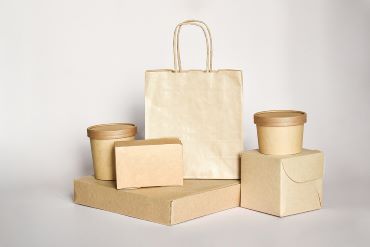Shredded Paper’s Recycling Journey – From Document to Paper Cup
 Have you ever wondered where your shredded paper ends up? Imagine this: that piece of paper you just tossed into the shred bin could transform into a brand-new paper cup. Let’s take a virtual journey through the fascinating lifecycle of shredded paper, uncovering how it evolves from a secure document to a recycled product.
Have you ever wondered where your shredded paper ends up? Imagine this: that piece of paper you just tossed into the shred bin could transform into a brand-new paper cup. Let’s take a virtual journey through the fascinating lifecycle of shredded paper, uncovering how it evolves from a secure document to a recycled product.
Chapter 1: Why Secure Shredding Matters
In today’s digital and data-driven world, identity theft and data breaches are serious threats. Every document containing personal or confidential information—credit card statements, medical records, or business contracts—becomes a liability if not properly destroyed. This is why secure shredding is so important.
Compliance with privacy laws such as HIPAA and CPRA is another critical reason to shred documents responsibly. Professional shredding services, especially those certified by NAID AAA, ensure that your sensitive information is destroyed safely and securely, giving you peace of mind.
Chapter 2: The Shredding Process Begins
Once you’ve placed your documents in a secure shredding bin, the real journey starts. Shredding companies use advanced methods to ensure your information remains confidential:
- Cross-cut shredding turns documents into confetti-like pieces.
- Particle shredding reduces paper into minuscule fragments, providing maximum security.
Certified shredding services handle this process professionally, ensuring a secure chain of custody from start to finish.
Chapter 3: Sorting and Preparing for Recycling
After the paper is shredded, it’s collected into secure bins. At the facility, the material is sorted to remove contaminants like plastics and metals. Clean, sorted paper is essential for producing high-quality recycled products. Workers or automated systems carefully sift through the material, ensuring only paper moves forward in the process.
Chapter 4: The Journey to the Recycling Plant
The sorted paper is compressed into bales and transported to a recycling plant. Recycling shredded paper is an eco-friendly alternative to sending waste to landfills. It helps reduce greenhouse gas emissions, conserves resources, and contributes to a more sustainable planet.
Chapter 5: Breaking it Down – Pulping
At the recycling facility, the bales of shredded paper are mixed with water and chemicals to create pulp. This slurry undergoes a cleaning process to remove ink and other impurities, leaving behind clean paper fibers. These fibers are the foundation for creating new paper products.
Chapter 6: Rebirth as a Paper Cup
From pulp, the material is pressed, dried, and rolled into sheets of recycled paper. These sheets are then molded into products such as paper cups. Did you know it takes just a few shredded documents to create one small recycled cup? It’s an incredible example of resourcefulness and sustainability.
Chapter 7: Environmental Impact of Recycling
Recycling one ton of paper saves:
- 17 trees
- 7,000 gallons of water
- Energy equivalent to powering a home for six months
By recycling, you’re not only protecting your data but also preserving natural resources and reducing environmental damage.
Chapter 8: One Small Step for You, One Giant Leap for Sustainability
Each piece of paper you recycle contributes to a bigger picture—data security and environmental sustainability. Next time you shred documents, remember the journey they’ll embark on, transforming into products like a paper cup while reducing landfill waste.
Chapter 9: Partner with a Professional Shredding Service
Ready to contribute to a greener planet while safeguarding your information? Pacific Shredding offers NAID AAA Certified shredding services, ensuring 100% of shredded material is recycled. Call us today at 800-685-9034 or complete the form on this page to get started. Together, we can protect your data and the environment.
